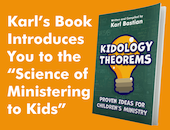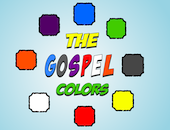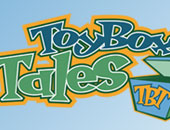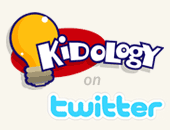Explaining the Trinity to Kids
Membership Level› Guest
Author/Source: Sam Luce
Topic: Trinity
How do you explain the Trinity to your kids?

The biggest problem with explaining the Trinity to kids is the fact that it is a mystery. We can never fully understand it, but we can and should grow in our understanding of it. It’s something that is core to our faith and therefore should not be brushed aside.
The problem with explaining something so complex to kids is we look for a solid object to explain such abstract truths. The go-to objects for explaining the Trinity to kids are water, apples, and eggs. How do I know this? Because I have been guilty of using them. When I address these misconceptions, it’s from a place of mutual understanding because I have used each of these in explaining this central doctrine to the Christian faith. I’ll try in a blog post to be helpful to parents and kids workers alike. This post will by no means be comprehensive, but I hope that it is useful and accurate.
Why the Trinity Matters
Some of you might be asking what the big deal is. Why make such a big deal of the Trinity? The reality is the Trinity is one of the core doctrines of our faith. It is complicated, so a visual illustration is helpful for kids. In the past, I have used illustrations that answer kids' questions about the Trinity, but do so at the expense of mystery and what is true. One of the more traditional ways people have used in the past (myself included) to describe the Trinity is an analogy of the states of water. Dr. Bruce Ware does an excellent job in his amazing book, Big Truths for Young Hearts.
Yet others have thought that H20 (water) shows us the Trinity since H20 can be three things: solid (ice), liquid (running water), and vapor (steam). But the same H20 molecules cannot be all three at exactly the same time. H20 is a good illustration of modalism (a false teaching of the Trinity that we’ll learn more about later) where God is first the Father, then the Son, and then the Spirit, one at a time. But the Bible teaches that God is Father, Son, and Holy Spirit all at the same time. Each Person lives eternally as God.
The closest thing I’ve imagined to the Trinity is drawing one circle using three colored markers (perhaps red, blue, and green). If you draw the same circle three times, with each color overlapping exactly the previous one, you have one circle. But the red line is not the blue line, and the blue line is not the green line. Yet all three lines enclose only one circle. While this illustration may work in a very small part, the truth is that there simply is nothing in our experience that shows us exactly what the doctrine of the Trinity teaches. Nothing quite works to show what it means for God to be one in his nature as the one true God, yet three in Persons as the Father, Son, and Holy Spirit, each fully God. But we should not be surprised at this. After all, the Bible has told us many times that there is no one like the Lord (Exodus 8:10; 9:14; Deuteronomy 33:26; 34:11; Jeremiah 10:6–7). He is the one and only true and living God, and he also is unlike anything or anyone else.
Ware, Bruce A. (2009-03-31). Big Truths for Young Hearts: Teaching and Learning the Greatness of God (p. 43). Crossway. Kindle Edition.
Why is Precision in Our Illustrations Important?
1. We have let our kids know that we don’t just take deep things about God, put a bow on them, and move on. When we rightly try to solve our kids questions with pat answers and simple analogies, we simplify rather than deepen their faith, because we leave no room for mystery.
2. Even though we want to leave room for mystery, we have to do our best to help our kids understand their faith. We have to let them know that even though we don’t fully understand the Trinity ourselves, we can grow in our understanding, and we should grow in our understanding.
We need to be careful that we paint a picture for our kids of a God that is three and a God that is one. It is through this understanding that we understand the submission and community God has in himself. This is important for us to understand because for God to be a God of love, he has to have an object to love. When we misunderstand the Trinity and see God as one but not three, he needs an object to love and that object is us. It is important that we understand that God made us not because he needed an object to love but as the overflow of the love and community he has and has always had with himself. The reason this matters is it defines for us who is the center of our proverbial and literal universe. When we see God as needing us, we place ourselves at the center of our universe. When we see that God created us out of the overflow of the completeness in himself and as a by-product of that relationship, we find rest and an invitation to what Paul says is “Truly life.”
The one God does most everything that he does through all three Persons of the Trinity. Each Person does his own distinctive work, each contributing his own part—singing, as it were, his own line of the music—and together they accomplish exactly what is best and perfectly wise and most beautiful.
Ware, Bruce A.












